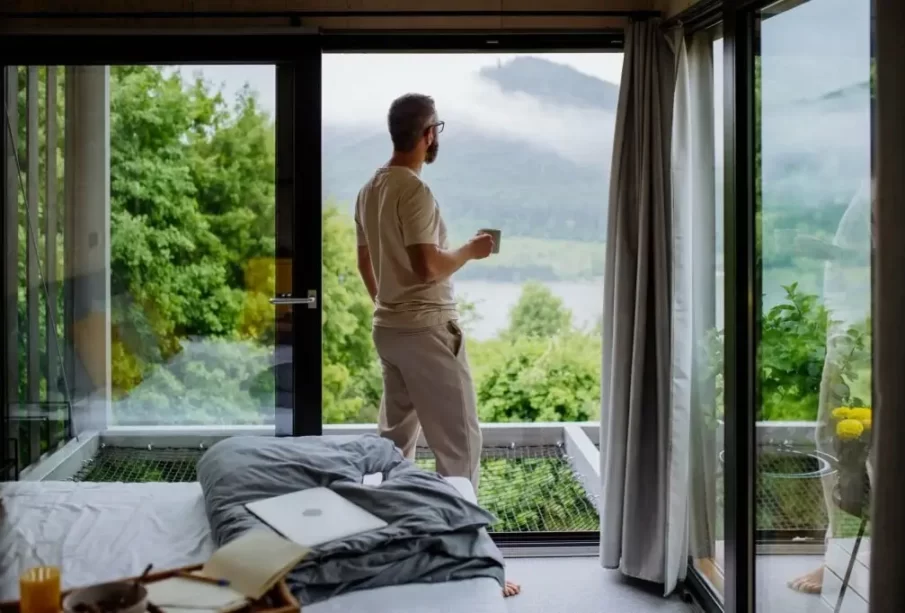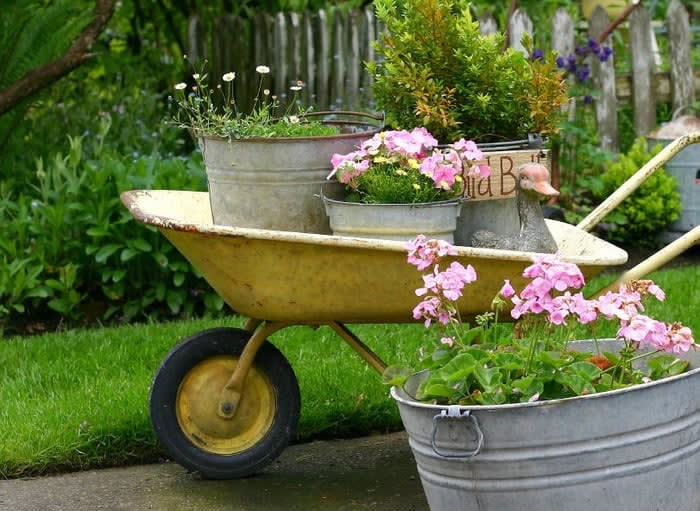

Transform Your Home into an Eco-Friendly Haven: A green home is more than just a trend—it’s a commitment to a healthier planet and a more sustainable future. Many of us are seeking ways to make our homes more eco-friendly, but the options can be overwhelming. This guide will provide you with practical, actionable steps to create an eco-conscious living space, addressing concerns about cost, complexity, and the overall impact. We’ll explore sustainable solutions from simple tweaks to significant renovations. This comprehensive guide will walk you through the different aspects of eco-friendly home improvements and provide examples and practical advice for each, helping you navigate your eco-friendly home journey.
Understanding the Importance of an Eco-Friendly Home
The Environmental Impact of Our Homes
Our homes significantly impact the environment. From the materials used in construction to the energy consumption of appliances, every choice we make has an effect on the planet. Increasing environmental awareness drives people to make choices that lessen the environmental burden.
The Personal Benefits of Eco-Friendly Living
The shift towards eco-friendly living offers significant personal benefits. Beyond the environmental impact, sustainable living brings a sense of responsibility and pride in contributing to a healthier future. It can improve indoor air quality and lead to significant cost savings on energy bills.
Sustainable Solutions for a Greener Home
This guide presents a variety of affordable and achievable eco-friendly home improvement solutions.
We will explore these various approaches in the following sections to help you create a more sustainable, healthier, and more affordable home environment.
Sustainable Building Materials
Exploring Eco-Friendly Construction Materials
Using sustainable building materials is key to creating a truly eco-friendly home. Avoid materials like formaldehyde and other harmful substances that can negatively impact indoor air quality. Prioritize products made with recycled or renewable materials, such as bamboo, reclaimed wood, or sustainably harvested timber. Reduce your carbon footprint by selecting materials with lower embodied energy, meaning less energy was used in their manufacturing process.
Case Study: Using Bamboo in Construction
Bamboo offers a sustainable alternative to wood. It grows rapidly, requires minimal water, and is naturally resistant to pests. In many regions, bamboo construction is becoming increasingly popular as a sustainable and environmentally friendly alternative.
Considering Recycled Materials
Incorporate recycled materials into your home decor to reduce waste. Look for furniture or décor made from recycled plastics, metals, or glass. This method helps reduce landfill waste and promotes a circular economy.
Energy Efficiency: Key to Sustainability
Smart Home Technologies & Energy Efficiency
Incorporating smart home technologies can significantly enhance energy efficiency. Smart thermostats, which learn your schedule and adjust the temperature accordingly, are a great start. Using LED lights in place of traditional incandescent bulbs reduces energy consumption dramatically. These small adjustments result in tangible savings on utility bills.
Renewable Energy Sources: Solar and Wind
Consider installing solar panels or a wind turbine to generate renewable energy. These are significant investments but can substantially reduce reliance on traditional energy sources over time. Solar panels offer a compelling path to reducing our carbon footprint, while wind power offers another alternative. Both are vital tools for achieving a greener home.
Energy-Efficient Appliances and Fixtures
When replacing appliances or fixtures, choose energy-efficient models. Energy Star-certified appliances and water-efficient fixtures can significantly reduce your energy and water consumption and cut long-term costs.
Water Conservation Strategies
Implementing Water-Saving Techniques
Water conservation is crucial in an eco-friendly home. Install low-flow showerheads and faucets to reduce water usage. Fix leaky faucets and pipes immediately. Encourage water-efficient landscaping practices, such as using drought-resistant plants. These improvements contribute to significant water savings and lessen the environmental impact.
Greywater Recycling Systems
Consider installing a greywater recycling system to reuse wastewater from showers or sinks for watering plants or other non-potable uses. This dramatically reduces water consumption and helps support responsible water management.
Landscaping for Water Conservation
Choose drought-tolerant plants for your landscaping to reduce water usage and promote a sustainable approach to gardening. Implement techniques like mulching to help retain moisture in the soil.
Waste Reduction and Recycling
Zero-Waste Lifestyle and Recycling
Embrace a zero-waste lifestyle by implementing recycling programs, composting food scraps, and reducing single-use plastics. Carry reusable bags, water bottles, and coffee cups to drastically lessen reliance on disposable items. Encourage waste reduction and recycling within the household.
Composting Strategies
Start a compost bin to recycle food waste and yard trimmings. Composting reduces landfill waste and creates nutrient-rich soil for your garden. This natural approach is a great way to reduce your home’s environmental impact.
Sustainable Packaging and Products
Choose products with minimal packaging or sustainable packaging materials. Select products made with recycled or renewable materials.
Eco-Friendly Home Decor and Design
Conscious Design Choices for Sustainability
Eco-friendly design goes beyond functionality; it embraces aesthetics. Choose furniture made from recycled or sustainable materials and opt for natural and unrefined materials such as wood and stone. Incorporate natural light, air circulation, and sustainable decor pieces. Focus on creating a space that balances style with sustainability.
Natural Light and Ventilation
Maximize natural light and ventilation to reduce the need for artificial lighting and air conditioning. Design the layout and placement of windows to optimize natural light and air circulation. This minimizes energy consumption.
Sustainable Decor and Furnishings
Choose decor and furnishings from sustainable and ethical sources.
Promoting Eco-Friendly Habits
Educating Family and Friends
Encourage your family and friends to adopt eco-friendly habits within their homes. Share your knowledge about sustainable practices and inspire them to make similar changes. This process of sharing knowledge helps to foster a more eco-conscious community.
Community Engagement and Awareness
Join local initiatives and support organizations committed to promoting eco-friendly living in your community. Get involved in initiatives and advocate for sustainable practices. Partner with local organizations to promote awareness and education about eco-friendly living.
Ongoing Learning and Adaptation
Continuously learn about new eco-friendly practices and adapt your home to incorporate them. Sustainable living is an evolving journey.
Budgeting for Eco-Friendly Upgrades
Prioritizing Changes
Prioritize eco-friendly upgrades based on their impact and budget. Start with low-cost improvements and progressively implement more significant changes. This phased approach allows for a more sustainable management of your budget.
Financing Options
Explore financing options and government incentives available for eco-friendly upgrades. Research available grants and loans to help make your improvements financially feasible.
Long-Term Savings
Eco-friendly improvements often lead to lower long-term costs due to reduced utility bills and maintenance needs.
Frequently Asked Questions:
What are some simple eco-friendly home improvements I can start with?
Start with easy swaps like energy-efficient light bulbs and low-flow showerheads. Also, consider purchasing reusable water bottles, coffee cups, and shopping bags to reduce single-use plastics. These small changes compound to make a significant difference. Another easy start is to reduce water usage by taking shorter showers and fixing any leaky faucets or pipes.
How much does it cost to make my home truly eco-friendly?
The upfront cost of eco-friendly renovations can vary widely based on the chosen upgrades. While some changes, like switching to LED lights, are relatively inexpensive, others, like installing solar panels, can be substantial. However, many eco-friendly practices are cost-effective and in the long run, save money on utility bills. Carefully planning and prioritizing changes is key to staying within budget while achieving your sustainability goals.
Are there tax incentives or rebates for eco-friendly home improvements?
Tax incentives and rebates can often offset the cost of eco-friendly upgrades. Check with your local government or state energy agency for the latest information about available rebates or tax breaks related to energy-efficient home improvements such as insulation upgrades and solar panels. Contact your tax advisor for specific information on how these tax breaks can apply to you.
Transforming your home into an eco-friendly haven is a journey, not a destination. By incorporating these tips and embracing a conscious lifestyle, you can significantly reduce your environmental footprint while enjoying a healthier, happier home. Start small, celebrate your progress, and inspire others to join the eco-conscious movement. Take the next step today and discover the rewarding journey of creating a sustainable and stylish green home environment.